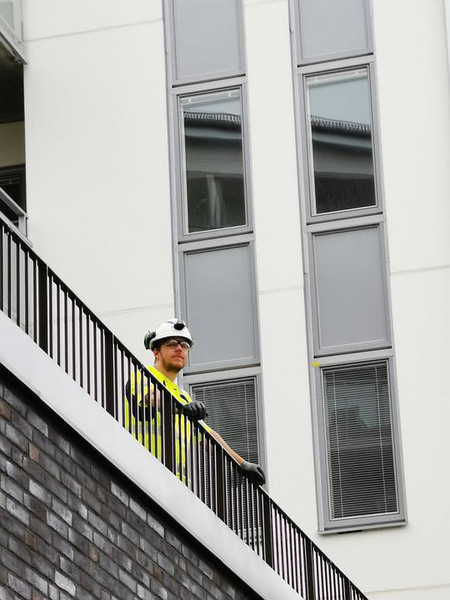When Is It Time to Replace Your Deck Railing?
Posted by Pedro D. Sanchez on Mar 12th 2019
When Is It Time to Replace Your Deck Railing?
Signs That It’s Time to Replace Your Deck Railing
If you’re regularly checking your deck for safety, and you should be, you might notice the early warning signs that a railing is about to become dangerously unsafe. It’s wise to check your railing every month or so for issues, but I realize that this schedule is a little too rigorous for most people. At the very least, check your railing once a season, and after any major storm. I check for the following problems in wooden railing systems:
- Wobbly railings: Your railing should be firmly connected to the deck with no room for give as you push on it. If it’s started to go wobbly, that’s a sign that your connections are starting to fail. A wobbly railing often means that the wood has contracted around your connections, or that the connection is no longer tight because your fasteners are loose or failing. This is probably the biggest clue that your railing is no longer safe. Wobbly railings only get worse, so you need to take immediate steps to find the problem. Fixing a wobbly deck railing isn’t always complicated, so figure out exactly what the issue is before you call someone else in to do it for you.
- Warped wood: Warped wood, especially at the base of your posts, is a bad sign. If the wood appears wider at the bottom of your railing posts, is splintered, soft, or discolored, there’s a chance water is working its way into the join where your railing posts meet your deck. That water is corroding the wood at a very important structural point. Warped wood can also lead to mold, which will deteriorate the railing even faster.
- Corroded connections: You may start to notice either corrosion or rust in the screws and nails that connect the parts of your railing to each other. This corrosion might appear as either a white, powdery looking substance, or it might be rusty. Either way, it’s a sign that the metal hardware in your railing is starting to break down.
- Pest issues: Pest issues rarely stay isolated. If you’ve seen one termite, carpenter ant, or bark beetle, chances are you have thousands. In this case, you want to get an exterminator in first to ensure the problem doesn’t spread. Get the entire structure inspected following the extermination to determine if you can just replace the railing, or if you might have to replace the entire deck.
There’s no specific shelf life for a railing, so it can be hard to know when a railing’s time has come. Some will last ten years, others seem to last indefinitely. Of course, the lifespan of a railing depends on a lot of different factors, and when you have to pick a new one, you’ll want to take those factors into consideration.
Tips for Choosing a Railing That Lasts
When my friend accepted the fact that his railing was done for, he decided to choose a different material so his next railing would last a little longer. He asked for my advice and I made a few suggestions. Here are the things that should affect your decision as you pick out your next railing:
- Climate: Wood railings might be cheap, but in certain climates, they just aren’t going to last. If you live in a climate that has extreme weather like snowstorms, hurricanes, or heavy rains, your railing is going to break down faster. Water and damp increase the development of fungi which causes wood to warp and deteriorate. Very hot, dry weather can also be problematic, since UV rays break down the fibers in wood. Consider your climate when putting in your railing so you won’t have to replace it every few years.
- Materials: Iron or aluminum systems are excellent choices for railing durability. These two materials aren’t porous, so water rolls right off rather than getting absorbed. They also resist rot and pests, allowing you to have a lower maintenance system that will last for years.
- Coating: While iron and aluminum railings are tougher in many ways than wood, without a coating they’ll corrode over time. If you’re wondering about powder coating vs paint on railings, always choose a railing with a powder coat as it protects against moisture and UV rays and extends the life of your railing. Some systems only offer a powder coat, which helps protect the bare metal but isn’t enough, as even a good quality powder coat can still let through tiny amounts of moisture. When possible, seek out a manufacturer who offers a metal railing system with more than one type of coating, such as a zinc precocity, e-coat, and powder coat.
- Warranty: When you buy a system look for one with a warranty, preferably one that’s longer than 10 years. Especially when you pay a little more to upgrade to metal from the standard pressure-treated wood, you want a guarantee that the railing system you’ve purchased will last. A good warranty also suggests that the company believes in and stands behind their work.
